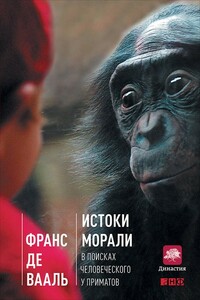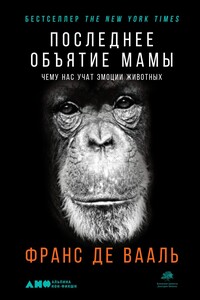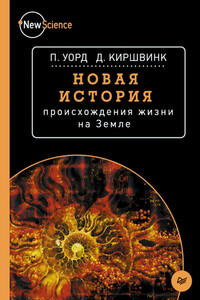London: Kegan, Paul, and Trench.
–. 1884. Mental Evolution in Animals. New York: Appleton.
Sacks, O. 1985. The Man Who Mistook His Wife for a Hat. London: Picador. Saito, A., and K. Shinozuka. 2013. Vocal recognition of owners by domestic cats (Felis catus). Animal Cognition 16:685–90.
Sanz, C. M., C. Schöning, and D. B. Morgan. 2010. Chimpanzees prey on army ants with specialized tool set. American Journal of Primatology 72: 17–24.
Sapolsky, R. 2010. Language. May 21, http://bit.ly / 1BUEv9L.
Satel, S., and S. O. Lilienfeld. 2013. Brain Washed: The Seductive Appeal of Mindless Neuroscience. New York: Basic Books.
Savage-Rumbaugh, S., and R. Lewin. 1994. Kanzi: The Ape at the Brink of the Human Mind. New York: Wiley.
Sayigh, L. S., et al. 1999. Individual recognition in wild bottlenose dolphins: A field test using playback experiments. Animal Behaviour 57:41–50.
Schel, M. A., et al. 2013. Chimpanzee alarm call production meets key criteria for intentionality. Plos ONE 8: e76674.
Schusterman, R. J., C. Reichmuth Kastak, and D. Kastak. 2003. Equivalence classification as an approach to social knowledge: From sea lions to simians. In Animal Social Complexity, ed. F. B. M. de Waal and P. L. Tyack, 179–206. Cambridge, MA: Harvard University Press.
Semendeferi, K., A. Lu, N. Schenker, and H. Damasio. 2002. Humans and great apes share a large frontal cortex. Nature Neuroscience 5:272–76.
Sheehan, M. J., and E. A. Tibbetts. 2011. Specialized face learning is associated with individual recognition in paper wasps. Science 334:1272–75.
Shettleworth, S. J. 1993. Varieties of learning and memory in animals. Journal of Experimental Psychology: Animal Behavior Processes 19:5–14.
–. 2007. Planning for breakfast. Nature 445:825–26.
–. 2010. Q&A. Current Biology 20: R910–11.
–. 2012. Fundamentals of Comparative Cognition. Oxford: Oxford University Press.
Siebenaler, J. B., and D. K. Caldwell. 1956. Cooperation among adult dolphins. Journal of Mammalogy 37:126–28.
Silberberg, A., and D. Kearns. 2009. Memory for the order of brief ly presented numerals in humans as a function of practice. Animal Cognition 12:405–7.
Skinner, B. F. 1938. The Behavior of Organisms. New York: Appleton-Century-Crofts.
–. 1956. A case history of the scientific method. American Psychologist 11:221–33.
–. 1969. Contingencies of Reinforcement. New York: Appleton-Century-Crofts.
Slocombe, K., and K. Zuberbühler. 2007. Chimpanzees modify recruitment screams as a function of audience composition. Proceedings of the National Academy of Sciences USA 104:17228–33.
Smith, A. 1976 [orig. 1759]. A Theory of Moral Sentiments, ed. D. D. Raphael and A. L. Macfie. Oxford: Clarendon.
Smith, J. D., et al. 1995. The uncertain response in the bottlenosed dolphin (Tursiops truncatus). Journal of Experimental Psychology: General 124:391–408.
Sober, E. 1998. Morgan's canon. In The Evolution of Mind, ed. D. D. Cummins and Colin Allen, 224–42. Oxford: Oxford University Press.
Soltis, J., et al. 2014. African elephant alarm calls distinguish between threats from humans and bees. Plos ONE 9: e89403.
Sorge, R. E., et al. 2014. Olfactory exposure to males, including men, causes stress and related analgesia in rodents. Nature Methods 11:629–32.
Spocter, M. A., et al. 2010. Wernicke's area homologue in chimpanzees (Pan troglodytes) and its relation to the appearance of modern human language. Proceedings of the Royal Society B 277:2165–74.
St. Amant, R., and T. E. Horton. 2008. Revisiting the definition of animal tool use. Animal Behaviour 75:1199–208.
Stenger, V. J. 1999. The anthropic coincidences: A natural explanation. Skeptical Intelligencer 3:2–17.
Stix, G. 2014. The "it" factor. Scientific American, Sept., pp. 72–79.
Suchak, M., and F. B. M. de Waal. 2012. Monkeys benefit from reciprocity without the cognitive burden. Proceedings of the National Academy of Sciences USA 109:15191–96.
Suchak, M., T. M. Eppley, M. W. Campbell, and F. B. M. de Waal. 2014. Ape duos and trios: Spontaneous cooperation with free partner choice in chimpanzees.







